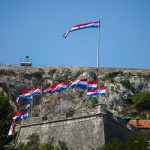
Independence Day in Nicaragua
Independence Day is a national holiday in Nicaragua and is observed annually on September 15. This holiday commemorates Nicaragua’s independence from Spanish rule on this date in 1821—a date when several Central American provinces also gained their independence.
On this holiday, Nicaraguans have the day off, and many schools, businesses, and government offices are closed for the day. It is also a day when many school bands and dancers hold parades across the country. Other celebratory events that take place on this holiday include street festivals and parties, communal meals, and fireworks displays attended by large crowds.
The History of Independence Day in Nicaragua
For thousands of years, the region now known as Nicaragua was inhabited by various indigenous cultures. Then Christopher Columbus visited the area in 1502 during his fourth voyage. He became the first European to set foot in the area.
Twenty years later, Conquistador Gil González Dávila attempted to conquer Nicaragua, but his attempt was repelled by the native people. In 1524, Francisco Hernández de Córdoba began a new expedition and ended up establishing the towns of Granada and León.
Costa Rica, El Salvador, Honduras, Guatemala, and Nicaragua became part of the Kingdom of Guatemala. It remained under Spanish rule until Spanish control began to erode due to their involvement in the European Peninsular War and local uprisings against the rule of King Joseph. On September 15, 1821, the Act of Independence of Central America was declared by the Province of Guatemala. That is why this Independence Day is celebrated by countries across Central America.
Observing Independence Day in Nicaragua
This holiday features events across the country. There is a high school battle of the bands that features traditional music and choreography, as well as street festivals, parades, and plenty of street food. The culmination of the festivities occurs with a large fireworks display enjoyed by huge groups of people.








